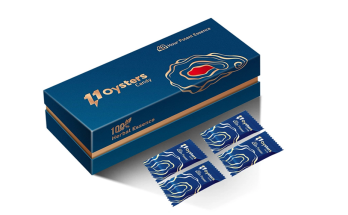Leg pain is a common complaint with many possible causes. If you’re experiencing pain when walking, running, or climbing stairs, there could be a treatable physical cause. If you are suffering from leg pain, you should see a specialist as soon as possible. Ariel Soffer MD, FACC, is one of Florida’s best leg pain specialists and an option you should seriously consider. We know that different people have different triggers and pain levels.
However, we wanted to highlight the best treatment options available.
Pain Medication
Over-the-counter medications are a popular stopgap way to reduce immediate pain. We usually recommend taking ibuprofen before exercising, strenuous activity, or daily activities that worsen your leg pain. You can also take acetaminophen for short periods if you prefer it over other medication options.
Nonsteroidal Anti-Inflammatory Drugs (NSAIDs)
Medications such as ibuprofen and naproxen work by blocking inflammatory responses. These medications are standard, effective options for relieving leg pain. While NSAIDs can reduce inflammation and pain, they aren’t always the best option for individuals with certain conditions. For example, if you have a bleeding disorder or kidney disease, you may avoid NSAIDs.
Injections
In recent years, injections have been increasingly popular for treating leg pain from muscle, nerve, or bone problems. A health care provider commonly delivers these shots. You can also self-inject certain medications with insulin needles under your skin. It’s important to note that injections aren’t used for all cases of leg pain. Other options, such as physical therapy, or oral medication, are often more effective first steps.
Physical Therapy
Therapy is usually the first treatment option to relieve lower body pain. Physical therapists can design customized programs to address your specific condition and improve your overall health.
Physical therapy can help you perform daily tasks more easily and live a pain-free life. In recent years, physical therapy options have expanded to include several different treatment types. You can receive electrotherapy, core strengthening exercises, and other procedures supervised by a rehabilitation specialist in many clinical settings. Aquatic Therapy is an option for individuals who prefer a less rigorous, low-impact approach.
Minimally Invasive Procedures
Minimally invasive procedures may be advisable for leg pain caused by conditions such as varicose veins. In these procedures, a specialist inserts a small tube with a camera and tools to treat the source of your leg pain. You might have minimally invasive surgery to remove or cauterize problematic veins that are causing discomfort in your legs.
Surgery
Some leg pain has a simple, treatable cause. If physical therapy, injections, or oral medications don’t relieve your pain after 6-8 weeks, surgery might be the best option for you. Depending on the cause of leg pain, surgery can be minimally invasive, have short recovery periods, and provide long-term pain relief. For example, if you have arthritis that causes joint damage in your leg, surgery can replace the damaged joint with an artificial one. Surgery for conditions such as bulging discs will also provide long-lasting pain relief for your legs.
Leg pain can come from several different sources and trigger various symptoms. Use the information above to make an accurate decision about your leg pain and the best treatment options. If you’d like to learn more about your specific condition, we suggest visiting Ariel Soffer’s website for an extensive list of resources.




